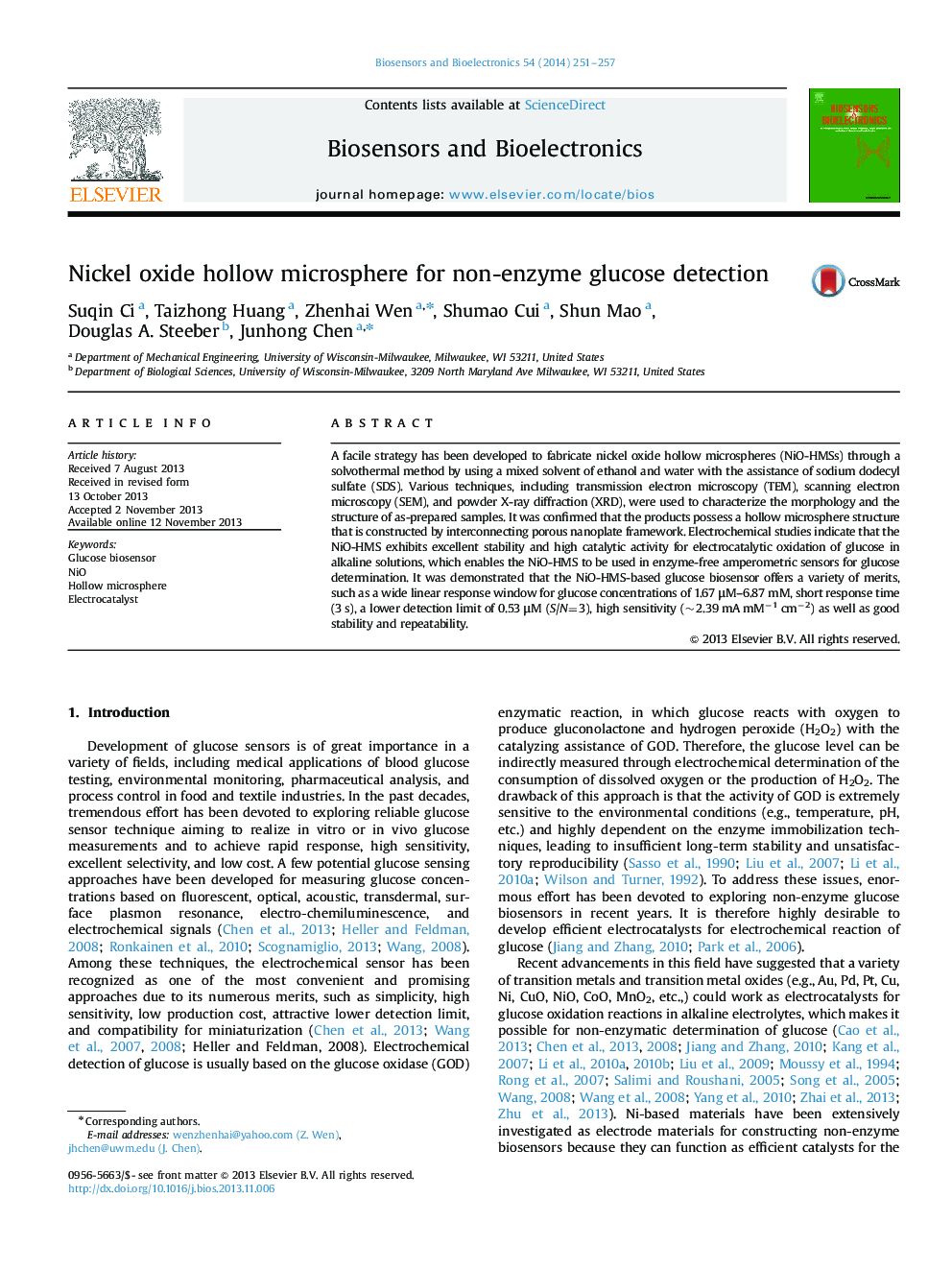| Article ID | Journal | Published Year | Pages | File Type |
|---|---|---|---|---|
| 7233667 | Biosensors and Bioelectronics | 2014 | 7 Pages |
Abstract
A facile strategy has been developed to fabricate nickel oxide hollow microspheres (NiO-HMSs) through a solvothermal method by using a mixed solvent of ethanol and water with the assistance of sodium dodecyl sulfate (SDS). Various techniques, including transmission electron microscopy (TEM), scanning electron microscopy (SEM), and powder X-ray diffraction (XRD), were used to characterize the morphology and the structure of as-prepared samples. It was confirmed that the products possess a hollow microsphere structure that is constructed by interconnecting porous nanoplate framework. Electrochemical studies indicate that the NiO-HMS exhibits excellent stability and high catalytic activity for electrocatalytic oxidation of glucose in alkaline solutions, which enables the NiO-HMS to be used in enzyme-free amperometric sensors for glucose determination. It was demonstrated that the NiO-HMS-based glucose biosensor offers a variety of merits, such as a wide linear response window for glucose concentrations of 1.67 μM-6.87 mM, short response time (3 s), a lower detection limit of 0.53 μM (S/N=3), high sensitivity (~2.39 mA mMâ1 cmâ2) as well as good stability and repeatability.
Related Topics
Physical Sciences and Engineering
Chemistry
Analytical Chemistry
Authors
Suqin Ci, Taizhong Huang, Zhenhai Wen, Shumao Cui, Shun Mao, Douglas A. Steeber, Junhong Chen,
